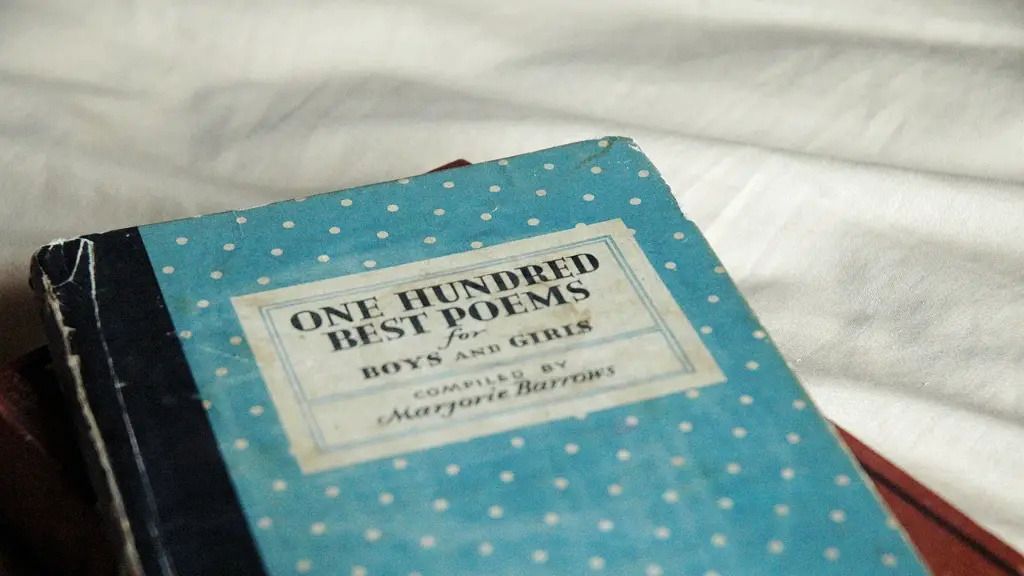Introduction
The art of Hebrew poetry has long been admired for its creative expression and sophisticated use of language. Its hallmarks of rhythm and parallelism infuse beauty and meaning, adding depth and personality to the text. Parallelism in Hebrew poetry works to weave two, three, or four phrases together, to form an extended, logical unity.
The Origin and History of Parallelism in Hebrew Poetry
Parallelism in Hebrew poetry dates back to Biblical times and was used as a technique to convey a message or idea. In the bible, many stories and verses are composed of parallel structures. This technique is referred to as ‘Parallelismus Membrorum’ and is a literary form of repetition. It is thought to have originated around 800-700 BCE, in the formative years of the ancient Hebrew language. Amongst its many uses, parallelism in poetry creates a rhythm and flow, encourages meditation, and enhances understanding. It can also be used to draw attention to a particular point, making it clearer than single words could.
Examples of Parallelism in Hebrew Poetry
To understand how parallelism works, it is important to look at examples. In the Bible, Psalm 19:7 is composed of parallel structure: “The law of the Lord is perfect, converting the soul; the testimony of the Lord is sure, making wise the simple”. This example is composed of two phrases that are complementary in meaning. Here, the first phrase expresses the perfection of God’s law and the second refers to its power to convert and make wise. Other examples from the Bible include the well-known phrase, “Love is patient, love is kind” (1 Corinthians 13:4), and “The ordinances of the Lord are true, and righteous altogether” (Psalm 19:9).
How Parallelism is Used in Hebrew Poetry
In Hebrew poetry, parallelism is often used to add an extra layer of meaning to the text. By using parallel phrases and ideas, the poet can amplify or clarify the meaning that is being conveyed. For example, a four-line poem could be composed of two ideas, stated in two lines and then echoed in the following two lines. This repetition can be effective when the poet wishes to emphasise a point or idea. It can also be used to link words, phrases, and sentences together to create a poetic string of ideas.
In addition, parallelism can be used to create a poetic rhythm. By repeating key words, phrases, or ideas in parallel structures, the poet creates a distinctive pattern, with a specific sway or feel. It is this that gives Hebrew poetry its unique sound, so often praised and admired.
The Benefits of Parallelism in Hebrew Poetry
Parallelism in Hebrew poetry has many benefits. Firstly, it allows the poet to convey a message or an idea in an elegant, engaging way. By using a carefully constructed series of parallel phrases or sentences, the poet can draw attention to certain ideas and make them easier to understand. Secondly, it gives the poem a flow and rhythm, which can be pleasing to the ear. Finally, it makes the poem easier to remember, as listeners are automatically drawn to the repeated phrases.
Parallels in Modern Poetry
Parallelism remains an important tool for writers today, in all poetic forms. Both ancient and modern poets use it to add their own unique touch to their work. For example, the famous poet Maya Angelou used parallelism in her famous poem “Still I Rise”: “Just like moons and like suns, With the certainty of tides, Just like hopes springing high, Still I rise”. Here she uses the parallel structure to echo and emphasise the idea of rising above. Similarly, the poet Emily Dickinson speaks of eternity through her parallelisms: “Because I could not stop for Death, He kindly stopped for me; The carriage held but just ourselves and Immortality”.
Parallelism and Its Significance
The use of parallelism in Hebrew poetry is a testament to the creativity and power of the written word. Hebrew poets have used it for centuries to convey ideas, emotions and stories. It is a powerful tool, capable of infusing rhythm and added meaning into a single poem. By utilising parallel phrases and ideas, poets can ensure that their stories and ideas are remembered for generations to come.
The Permeation of Parallelism in Other Languages
As Hebrew poetry has evolved, parallelism has spread to other languages. In English, Japanese, Chinese and many other languages, poets have adapted the technique to suit their own needs and styles. In the process, they have created new forms and enriched other literary forms. For example, the Japanese haiku uses a syllable and line structure that could be considered parallel in nature. Similarly, the Chinese form of short poem is also based on parallelism, and is a common form of literary expression today.
The Use of Parallelism in Other Genres of Literature
Parallelism is also incorporated in many other genres of literature, such as drama, fiction and creative writing. Here, it is often used to create a rhythm and anchor the text, adding a poetic touch to the story or poem. It also serves to emphasise certain concepts and create a sense of atmosphere. To illustrate this point, we can turn to Shakespeare’s famous play “Romeo and Juliet”. Shakespeare often uses parallel phrase structure to amplify his ideas: “O Romeo, Romeo! Wherefore art thou Romeo?” Here, he uses the repetition of “Romeo” and “Wherefore” to underscore the intensity of the scene.
The Impact of Parallelism in Hebrew Poetry
Parallelism in Hebrew poetry has had a huge impact on the world of literature. It has been used to convey powerful messages, evoke emotions, and create rhythms and patterns in texts. In turn, these have had an influence on other genres of writing and have inspired new forms of poetry. Even today, poets and writers continue to use parallelism to enhance their work and draw readers into their stories. It is this long-standing tradition that has made Hebrew poetry so special and so admired.




